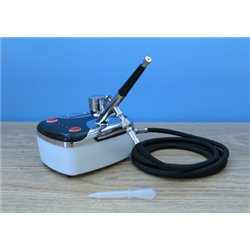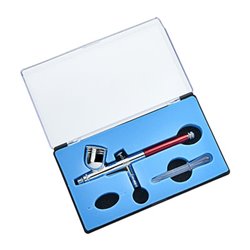Static grass puffer bottles work by manually charging model grass fibres with static electricity. When the charged...
No products
Product successfully added to your shopping cart
There are 0 items in your cart. There is 1 item in your cart.
Search Tips
What is a feathered edge and how can I create one whilst painting with an airbrush?
A feather edge is a soft blending of the demarcation line between different colours or tones so one gently fades into the other. This can be difficult to achieve with brush painting but an airbrush lends itself well to this technique. There are a number of ways to achieve feathering with an airbrush. The first option is to apply the feather freehand, this is reasonably simple but does require a steady hand! The two contrasting colours should be painted on first with a 'hard' boundary. To create the feather ideally start with the darker colour, then with the airbrush carefully angled gently blur the demarcation line moving from the darker to lighter area. The key here is to avoid moving too far from the demarcation line and use a carefully reduced flow to slowly build up the desired blurring effect.
The freehand technique may not appeal to all modellers. An alternative could be to use either rolled blue-tac/plasticine or rolled masking tape placed along the demarcation line. By carefully angling the airbrush either of these items could be used to gently blur the contrasting edges of the different colours and create a subtle feather. A similar technique is to use a piece of stiff card or paper. Again, with the airbrush gently angled, place the card or paper at the demarcation line and gently raise it from the surface of the model whilst spraying. With careful practice, this will have the effect of gently blurring the demarcation line.
One advantage of using blue-tac, rolled masking tape or paper to help create the feather is each of these items can be applied in a straight line or can easily be shaped to help feather an irregular pattern. All of the techniques mentioned can be used on a wide variety of modelling subjects. They could be equally effective at creating varying layers of dirt or grime on a locomotive or vehicle, or could likewise be used on feathered camouflage patterns on aircraft or ships.
Click here to receive the tips weekly in your mailbox. You can unsubscribe at any time.









